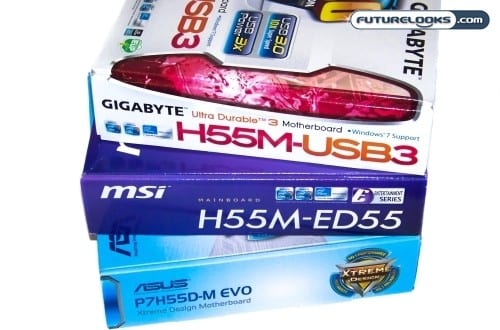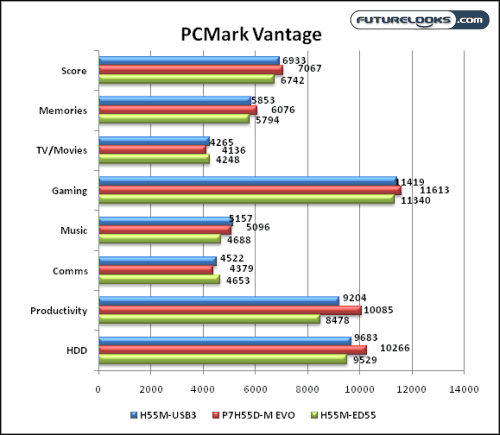Synthetic Benchmarks
To note, Intel Turbo Technology was enabled during benchmarking because it’s a default CPU feature that may work better on different motherboards. Naturally, this feature and Intel Turbo were disabled during overclocking for best results. Enabling this should show any signs of weakness more easily due to the demands of dynamic overclocking afforded by this technology.
3DMark Vantage
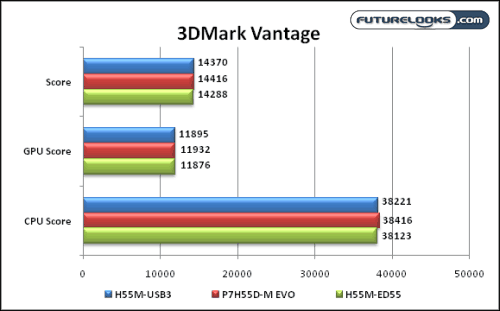
The scores are pretty close overall. The ASUS P7H55D-M EVO just seems a bit more eager than the rest of the boards in this particular benchmark suite.
PCMark Vantage
After about an hour and half, we get a little insight as to the strengths and weaknesses of the platforms. The ASUS P7H55D-M EVO is clearly ahead once again, with the GA-H55M-USB3 taking second and the H55M-ED55 picking up the rear.
SANDRA CPU
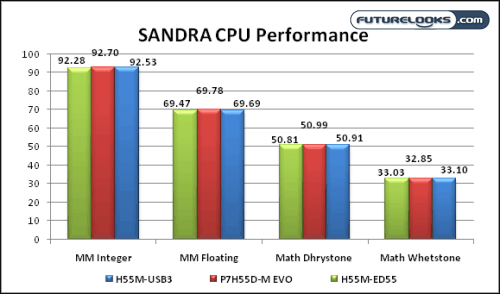
All three platforms handled Turbo settings very similarly despite what PCmark had to say. This usually gives us an indication of real world performance. And as such, the CPU performance had the ASUS P7H55D-M EVO taking top honors. We are sensing a pattern here.
CineBench R11.5
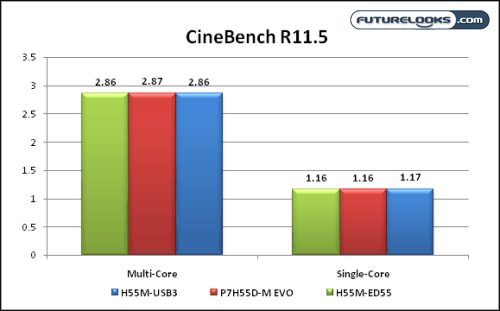
If you’re worried about rendering abilities, neither of the three platforms will disappoint. But, the ASUS P7H55D-M EVO might do it just a bit quicker.
Heaven Demo
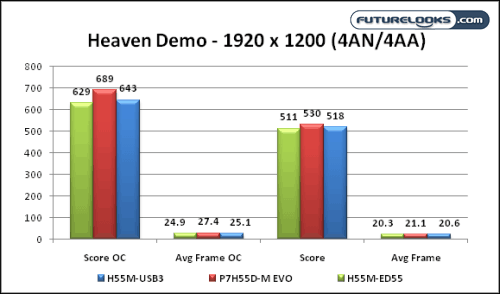
Alright, here we get some insight based on each platform’s hidden potential. At least when it comes to massively multiplayer games. The ASUS made a strong push leading the trio both in stock and overclocked settings. In fact, the EVO was far more eager when overclocked.

